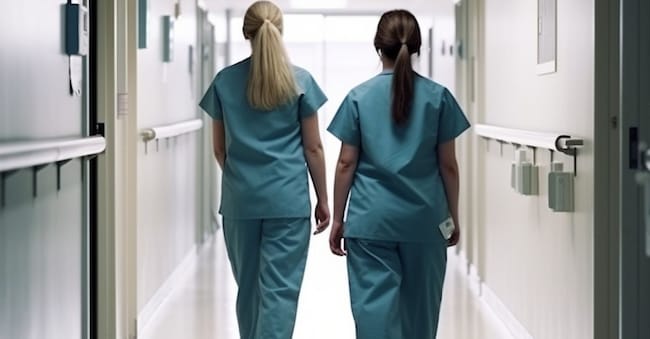Healthcare professions: 37,000 positions (+3.7%) are available, 55% of which are for nurses.


The 41 state universities are about to publish their admissions notices for the September 8th exam. There are 36,923 places available for the 23 degree programs in healthcare professions, at 49 universities, with over 500 courses, including nursing, physiotherapy, midwifery, speech therapists, radiology technicians, laboratory technicians, neurophysiology technicians, dieticians, and more.
The total of 36,923 positions offered by the University for the 23 professions is up 1,331 from last year's 35,592 (+3.7%), including 20,409 for nursing, accounting for 55% of all positions. However, the increase in positions in Medicine and Surgery would be even greater, rising to 22,374, the highest ever and exceeding the aforementioned 20,409 for Nursing, with a 10% increase for Medicine.
Regarding the number of applications for admission to healthcare professions, based on data from previous years, it is likely that approximately 65,000 students will be interested in enrolling.
Of the total average increase of 1,331 positions between 2024 and 2025, 16 courses with 1,495 positions prevail, including 440 more for Physiotherapists, up from 2,822 last year to the current 3,262 (+16%); Osteopaths, up from 70 to 425 (+355%), Radiology Technicians, up from 1,700 to 1,863 (+10%); Laboratory Technicians, up from 1,500 to 1,660 (+11%), and Speech Therapists, up from 986 to 1,112 (+13%). Following, with lower values, and below the threshold of 100: Psychiatric Rehabilitation Technician +63 from 525 to 588 (+12%), Cardiocirculatory Physiopathology Technician +56 from 236 to 292 (+24%), Prevention Technician +30 from 891 to 921 (+3.4%), Midwife +21 from 1,240 to 1,261 (+1.7%), Professional Educator +16 from 828 to 844 (+1.9%), Neurophysiopathology Technician +16 from 190 to 206 (+8.4%), Orthoptist +14 from 341 to 355 (+4.1%), Dietitian +13 from 590 to 603 (+2.2%), Pediatric Nurse +11 from 279 to 290 (+3.9%), Hygienist Dental +9 from 913 to 922 (+1%) and Podiatrist +2 from 117 to 119 (+1.7%).
On the contrary, the decrease of 164 places concerns only the 7 Audiometrist Technician Courses with -1 from 103 to 102, Hearing Aid Technician -4 from 303 to 299, Orthopedic Technician -2 from 209 to 207, Occupational Therapist -10 from 263 to 253 (-3.8%), Neuro and Psychomotor Therapist for Developmental Age -12 from 440 to 428, Nurse -26 from 20,435 last year to the current 20,409 (-0.13%) and finally Health Assistant -109 from 611 to 502 (-18%).
To help students choose a course and university, please refer to the data from the 2024 Annual Report .
We recommend checking each university's website for updates on both the number of places available and the application deadlines, which are all in August, from the 8th to the 31st.
The average cost of the entrance exam registration fee for the 41 state universities is €52, ranging from a minimum of €26 to a maximum of €100. Each university prepares its own questionnaires for the entrance exams, but they are the same for all 23 programs. Over half of the 41 state universities use the Cineca Consortium to develop a single questionnaire.
In past years, there have been approximately 64,000 applications for approximately 35,000 positions, a ratio of nearly two applications for every available position, considering the average for the 23 professions, but with significant variations. The highest ratio is for Physiotherapist (6.6), Speech Therapist (4.2), Midwife (4.1), Dietitian (3.7), Radiology Technician (2.5), and Dental Hygienist (2.4). All 19 professions follow, below 2, including Nurses (20,000 positions available), with a ratio of 1.0, varying between 0.8 in universities in Central and Northern Italy and nearly 2.0 in universities in Southern Italy, with approximately 3,500 students missing out.
Overall, for all healthcare professions, employment opportunities are relatively secure and readily available. This year's approximately 500,000 students graduating from high school have significant opportunities in choosing their degree program, particularly in light of the high employment rates for graduates in Nursing and the other 20 healthcare professions. Employment opportunities have consistently ranked highest among all subject areas, as evidenced by AlmaLaurea data , with employment rates rising from 77% to 85% for healthcare professions, nearly double the 44% average for all 16 subject areas.
Furthermore, there are educational programs that offer the opportunity to choose from a wide variety of study and career options, leading immediately to employment opportunities in the public and private sectors, as well as freelancers, upon graduation. Finally, interest is growing in the upcoming creation of specialized degrees in specific disciplines, starting with Nursing.
* Professor of Organization of Health Professions at the University of Bologna
News and insights on political, economic, and financial events.
Sign upilsole24ore





